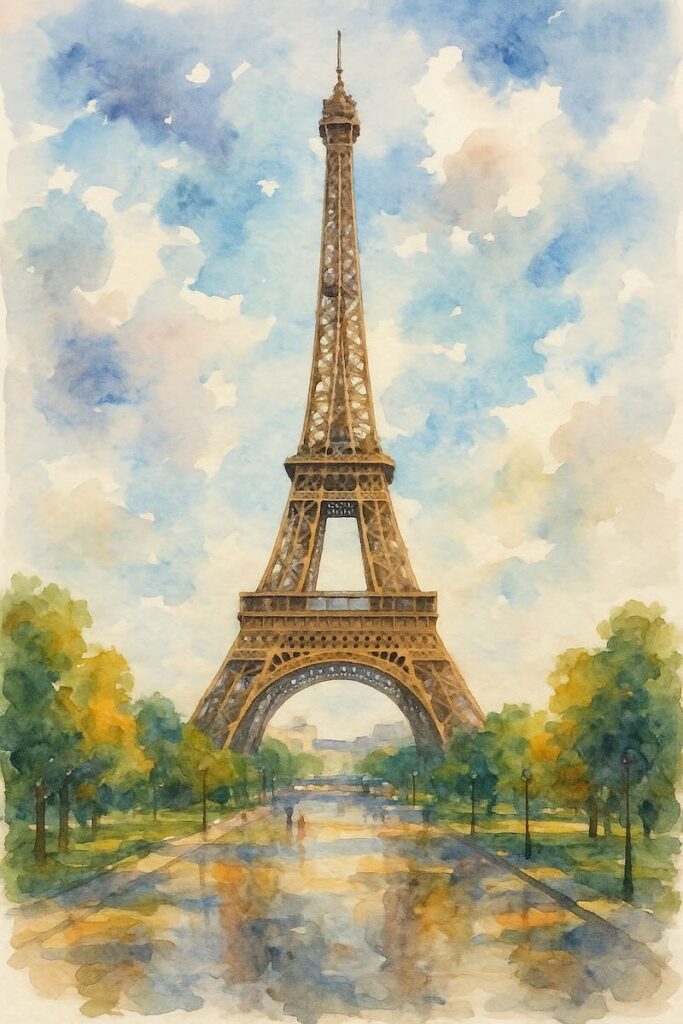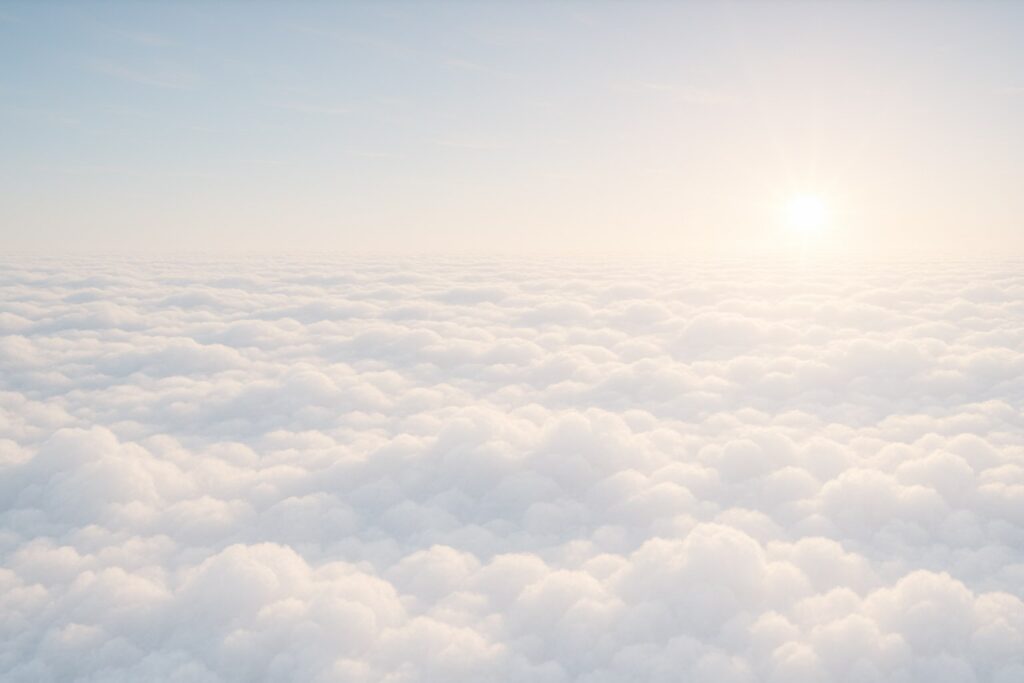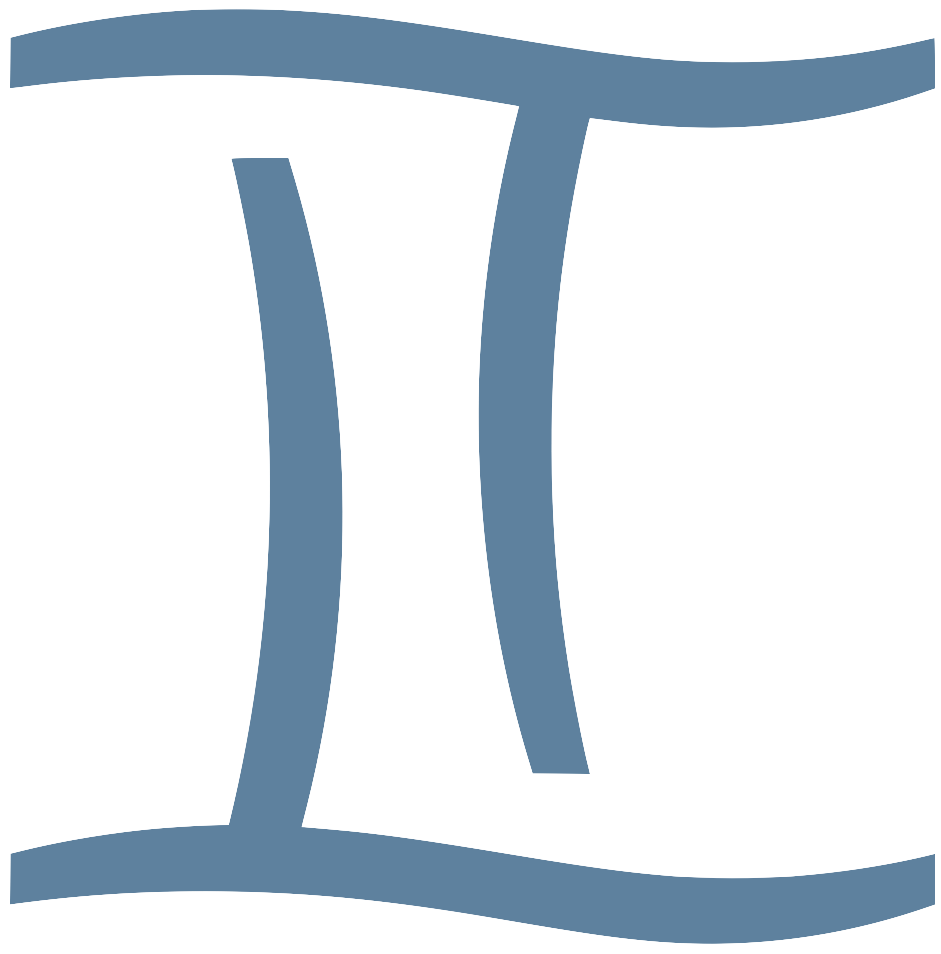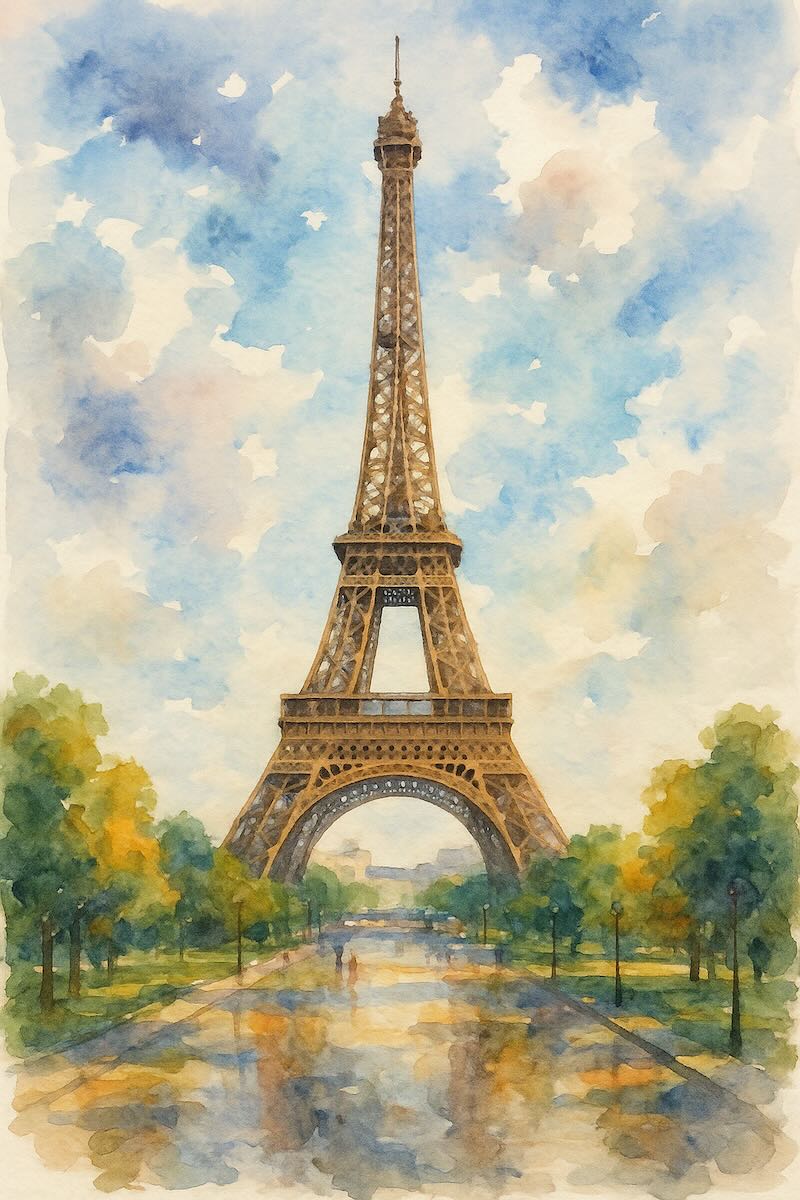Level 1 Reader
570 Words
A Big Tower in Paris
Paris is a big city. It is in France. Many people visit Paris. Paris has many famous places. One famous place is the Eiffel Tower. The Eiffel Tower is very tall. It is made of metal. It looks like a triangle. It is brown and grey. It stands in a park. The Eiffel Tower is next to the River Seine. People take photos of the tower. Many people go to see it every day.
A Man Named Eiffel
The tower is named after a man. His name was Gustave Eiffel. He was an engineer. He made bridges and buildings. Gustave Eiffel had an idea. He wanted to build a tall tower. He wanted the tower in Paris. Many people said, “No, it is too strange!” But Eiffel said, “Let me try.” In 1887, work began. Many men worked on the tower. They used metal and big tools. It took two years to build the tower.
The Tower is Ready
The Eiffel Tower opened in 1889. It was for a big fair. The fair was called the World’s Fair. The tower was the tallest building in the world. It was 300 meters tall. People came from many countries. They looked up and said, “Wow!” But not everyone liked it. Some people said, “It is ugly.” Other people said, “It is beautiful.” Now, most people love it.
Climbing the Tower
The Eiffel Tower has three floors. There are stairs and elevators. You can walk up or ride up. The first floor has a glass floor. You can look down. You can see the people and cars below. The second floor has shops. You can eat food there. You can buy gifts. The top floor is very high. It is cold and windy. But the view is amazing. You can see all of Paris.
Lights and Colors
At night, the Eiffel Tower has lights. It shines like stars. Every hour, the lights blink. People say, “It is like magic!” Sometimes the tower is a different color. On holidays, it can be blue, red, or green. At New Year, there are fireworks. The Eiffel Tower is the star of the show.
A Symbol of Paris
The Eiffel Tower is very famous. It is a symbol of Paris. It is on T-shirts, bags, and cups. Many movies show the Eiffel Tower. People kiss near the tower. People take selfies. Some people get married there. The Eiffel Tower is loved around the world.
Many Visitors
Every year, millions of people come. They wait in line. They buy tickets. They go up and take photos. Some people come in summer. It is hot, and the lines are long. Some people come in winter. It is cold, but it is quiet. There are guards and cameras. The Eiffel Tower is safe.
Fun Facts
The Eiffel Tower is made of iron. It is heavy. It has over 18,000 parts. It is painted every seven years. The tower can grow! When it is hot, the metal gets big. The tower can grow 15 centimeters. Birds sometimes sit on the tower. Sometimes it has snow. Sometimes it has fog.
A Tower for Everyone
Children like the Eiffel Tower. Parents like it too. Old people come. Young people come. Some people come once. Some people come many times. Some people say, “It is my dream.” The Eiffel Tower is for everyone. It is a place of joy.
Level 2 Reader
554 Words
A Symbol of Paris
The Eiffel Tower is one of the most famous landmarks in the world. It stands tall in Paris, France, and people from all over the world come to see it. When you think of Paris, you probably imagine the Eiffel Tower first. It is a symbol of France and its culture.
But did you know that many people did not like the tower when it was first built? Some thought it was ugly and didn’t belong in Paris. Today, however, millions of people visit it every year. It is now loved by both locals and tourists.
Who Built the Tower?
The Eiffel Tower is named after Gustave Eiffel, the engineer whose company built it. It was completed in 1889 for the World’s Fair, a big event that celebrated the 100th anniversary of the French Revolution.
Gustave Eiffel was already known for building bridges and iron structures. He didn’t design the tower himself, but he supported the idea and helped make it a reality. His company worked hard, using more than 18,000 pieces of iron to build the tower.
Building the Giant
Construction began in 1887 and took two years. It was finished just in time for the World’s Fair in 1889. At that time, it was the tallest building in the world, standing at 300 meters.
Building such a tall structure was not easy. Workers had to be very careful. Luckily, there were good safety measures, and only one person died during construction—very few for a project of that size at the time.
Many people were amazed by the tower. Others were shocked. Artists and writers signed a letter asking the city to remove it. They thought it ruined the beauty of Paris.
A Changing Purpose
The Eiffel Tower was only supposed to stand for 20 years. After that, it was going to be taken down. However, it became very useful as a radio tower. In fact, it helped the French military send messages during World War I.
Thanks to this new use, the tower stayed. Over time, people grew to love it more and more. It appeared in movies, books, and advertisements. It became part of Paris life.
Today, the tower is used for television and radio signals, but its most important job is tourism.
Visiting the Tower
Every year, over 6 million people visit the Eiffel Tower. It has three levels. You can take stairs or an elevator to reach the top. The view is amazing. On a clear day, you can see for more than 60 kilometers.
On the first and second floors, there are restaurants and gift shops. On the very top, there’s a small area where visitors can look out over the city. At night, the tower lights up. Every hour after sunset, it sparkles with thousands of lights for five minutes. It is a magical sight.
Fun Facts
Gustave Eiffel had a small apartment at the top of the tower. He used it to meet guests and do experiments.
The Eiffel Tower is painted every seven years to protect it from rust.
It can be different colors over time, but today it is a shade of bronze called “Eiffel Tower Brown.”
The tower can grow! In summer, the metal expands in the heat and makes the tower up to 15 cm taller.
Level 3 Reader
453 Words
The Eiffel Tower: A Symbol of Paris
Few landmarks are as instantly recognizable as the Eiffel Tower. Rising above the skyline of Paris, it has become a global icon of France, symbolizing both the elegance of French design and the boldness of modern engineering.
Designed by the engineer Gustave Eiffel, the tower was constructed for the 1889 Exposition Universelle (World’s Fair), which marked the 100th anniversary of the French Revolution. At the time, the structure was unlike anything the world had ever seen. Standing at over 300 meters tall, it was the tallest man-made structure in the world until the Chrysler Building was completed in New York City in 1930.
Despite its current popularity, the Eiffel Tower was not always loved. When it was first built, many Parisians hated it. Writers and artists called it “an iron monster” and “a disgrace to the city.” Some even signed a petition demanding it be torn down. Yet Gustave Eiffel defended his creation, arguing that it was a marvel of science and architecture. Over time, public opinion changed, and today, the tower is one of the most visited monuments in the world, attracting nearly seven million visitors annually.
Made of over 18,000 iron parts and held together by 2.5 million rivets, the Eiffel Tower was a technical achievement in its day. Construction took just over two years, and remarkably, only one worker died during the process—a record for that time. Its design was so advanced that engineers around the world studied it for decades, applying similar techniques to bridges and skyscrapers.
The tower has three levels that are open to the public. Visitors can climb the stairs or take elevators to enjoy stunning views of Paris. From the top, you can see famous landmarks such as the Seine River, Notre-Dame Cathedral, and the Arc de Triomphe. On clear days, the view stretches for over 70 kilometers.
More than just a tourist attraction, the Eiffel Tower has served practical purposes over the years. In the early 20th century, it was used for radio transmissions. During both World Wars, it played a role in military communications. Today, it still functions as a broadcasting tower and is illuminated every night with 20,000 sparkling lights.
Beyond its physical form, the Eiffel Tower has become a cultural symbol. It appears in countless films, paintings, and photographs, often representing love, beauty, or Paris itself. It’s also a favorite location for marriage proposals and romantic moments, reinforcing its reputation as the “Iron Lady” of Paris.
In a world where trends come and go, the Eiffel Tower has stood the test of time. From controversial beginnings to global admiration, it continues to inspire millions of people with its strength, grace, and enduring charm.
Extensive Listening
Level 1 Audio
Level 2 Audio
Level 3 Audio
Natural Discussion
AWS Polly & Google Notebook LM
La Torre Eiffel

Lectura nivel 1
554 Palabras
Una Torre Grande en París
París es una ciudad grande. Está en Francia. Muchas personas visitan París. París tiene muchos lugares famosos. Un lugar famoso es la Torre Eiffel. La Torre Eiffel es muy alta. Está hecha de metal. Parece un triángulo. Es de color marrón y gris. Está en un parque. La Torre Eiffel está junto al río Sena. Las personas toman fotos de la torre. Muchas personas van a verla todos los días.
Un Hombre Llamado Eiffel
La torre tiene el nombre de un hombre. Su nombre era Gustave Eiffel. Era ingeniero. Hacía puentes y edificios. Gustave Eiffel tuvo una idea. Quería construir una torre alta. Quería la torre en París. Muchas personas decían: “¡No, es muy rara!” Pero Eiffel dijo: “Déjenme intentarlo.” En 1887, empezó la obra. Muchos hombres trabajaron en la torre. Usaron metal y herramientas grandes. Tardaron dos años en construir la torre.
La Torre Está Lista
La Torre Eiffel abrió en 1889. Fue para una feria grande. La feria se llamaba la Exposición Universal. La torre era el edificio más alto del mundo. Tenía 300 metros de alto. Personas vinieron de muchos países. Miraban hacia arriba y decían: “¡Guau!” Pero no a todos les gustaba. Algunas personas decían: “Es fea.” Otras personas decían: “Es hermosa.” Ahora, a casi todos les encanta.
Subir a la Torre
La Torre Eiffel tiene tres pisos. Hay escaleras y ascensores. Puedes subir caminando o en ascensor. El primer piso tiene un piso de vidrio. Puedes mirar hacia abajo. Puedes ver a las personas y a los autos. El segundo piso tiene tiendas. Puedes comer allí. Puedes comprar regalos. El piso de arriba es muy alto. Hace frío y hay viento. Pero la vista es increíble. Puedes ver todo París.
Luces y Colores
Por la noche, la Torre Eiffel tiene luces. Brilla como las estrellas. Cada hora, las luces parpadean. Las personas dicen: “¡Es como magia!” A veces la torre tiene otro color. En días de fiesta, puede ser azul, roja o verde. En Año Nuevo, hay fuegos artificiales. La Torre Eiffel es la estrella del espectáculo.
Un Símbolo de París
La Torre Eiffel es muy famosa. Es un símbolo de París. Está en camisetas, bolsas y tazas. Muchas películas muestran la Torre Eiffel. Las personas se besan cerca de la torre. Las personas se toman selfies. Algunas personas se casan allí. La Torre Eiffel es querida en todo el mundo.
Muchos Visitantes
Cada año, millones de personas vienen. Esperan en la fila. Compran entradas. Suben y toman fotos. Algunas personas vienen en verano. Hace calor y las filas son largas. Algunas personas vienen en invierno. Hace frío, pero hay tranquilidad. Hay guardias y cámaras. La Torre Eiffel es segura.
Datos Curiosos
La Torre Eiffel está hecha de hierro. Es pesada. Tiene más de 18.000 piezas. Se pinta cada siete años. ¡La torre puede crecer! Cuando hace calor, el metal se expande. La torre puede crecer 15 centímetros. A veces los pájaros se posan en la torre. A veces hay nieve. A veces hay niebla.
Una Torre para Todos
A los niños les gusta la Torre Eiffel. A los padres también. Vienen personas mayores. Vienen personas jóvenes. Algunas personas vienen una vez. Otras vienen muchas veces. Algunas personas dicen: “Es mi sueño.” La Torre Eiffel es para todos. Es un lugar de alegría.
Lectura nivel 2
558 Palabras
Un Símbolo de París
La Torre Eiffel es uno de los monumentos más famosos del mundo. Está en París, Francia, y personas de todo el mundo vienen a verla. Cuando piensas en París, probablemente imagines primero la Torre Eiffel. Es un símbolo de Francia y de su cultura.
Pero, ¿sabías que a muchas personas no les gustó la torre cuando se construyó? Algunos pensaban que era fea y que no debía estar en París. Sin embargo, hoy en día, millones de personas la visitan cada año. Ahora, tanto los turistas como los locales la adoran.
¿Quién Construyó la Torre?
La Torre Eiffel lleva el nombre de Gustave Eiffel, el ingeniero cuya empresa la construyó. Se terminó en 1889 para la Exposición Universal, un gran evento que celebraba el 100 aniversario de la Revolución Francesa.
Gustave Eiffel ya era conocido por construir puentes y estructuras de hierro. Él no diseñó la torre, pero apoyó la idea y ayudó a hacerla realidad. Su empresa trabajó mucho, usando más de 18.000 piezas de hierro para construirla.
Construyendo el Gigante
La construcción comenzó en 1887 y duró dos años. Se terminó justo a tiempo para la Exposición Universal de 1889. En ese momento, era el edificio más alto del mundo, con 300 metros de altura.
Construir una estructura tan alta no fue fácil. Los trabajadores tenían que ser muy cuidadosos. Por suerte, había buenas medidas de seguridad, y solo una persona murió durante la construcción, algo poco común para un proyecto tan grande en esa época.
Muchas personas quedaron impresionadas con la torre. Otras se sorprendieron. Artistas y escritores firmaron una carta pidiendo que la quitaran. Pensaban que arruinaba la belleza de París.
Un Propósito Cambiante
La Torre Eiffel iba a estar en pie solo durante 20 años. Después de eso, iba a ser desmontada. Sin embargo, se volvió muy útil como torre de radio. De hecho, ayudó al ejército francés a enviar mensajes durante la Primera Guerra Mundial.
Gracias a este nuevo uso, la torre se quedó. Con el tiempo, la gente la fue queriendo más y más. Apareció en películas, libros y anuncios. Se volvió parte de la vida en París.
Hoy en día, la torre se usa para señales de televisión y radio, pero su trabajo más importante es el turismo.
Visitar la Torre
Cada año, más de seis millones de personas visitan la Torre Eiffel. Tiene tres niveles. Se puede subir por las escaleras o en ascensor hasta la cima. La vista es increíble. En un día claro, se puede ver a más de 60 kilómetros de distancia.
En el primer y segundo piso hay restaurantes y tiendas de recuerdos. En la parte más alta, hay un pequeño espacio donde los visitantes pueden ver toda la ciudad. Por la noche, la torre se ilumina. Cada hora después del atardecer, brilla con miles de luces durante cinco minutos. Es un espectáculo mágico.
Datos Curiosos
Gustave Eiffel tenía un pequeño apartamento en la parte superior de la torre. Lo usaba para recibir invitados y hacer experimentos.
La Torre Eiffel se pinta cada siete años para protegerla del óxido.
Puede tener colores diferentes con el tiempo, pero hoy tiene un tono de bronce llamado “Marrón Torre Eiffel.”
¡La torre puede crecer! En verano, el metal se expande con el calor y la torre puede ser hasta 15 cm más alta.
Lectura nivel 3
490 Palabras
La Torre Eiffel: Un Símbolo de París
Pocos monumentos son tan reconocibles al instante como la Torre Eiffel. Elevándose sobre el horizonte de París, se ha convertido en un ícono mundial de Francia, símbolo tanto de la elegancia del diseño francés como de la audacia de la ingeniería moderna.
Diseñada por el ingeniero Gustave Eiffel, la torre fue construida para la Exposición Universal de 1889, que conmemoraba el centenario de la Revolución Francesa. En su momento, la estructura era algo sin precedentes. Con más de 300 metros de altura, fue la construcción más alta del mundo hasta que se completó el Edificio Chrysler en Nueva York en 1930.
A pesar de su popularidad actual, la Torre Eiffel no siempre fue querida. Cuando se construyó, muchos parisinos la detestaban. Escritores y artistas la llamaban “un monstruo de hierro” y “una desgracia para la ciudad”. Algunos incluso firmaron una petición exigiendo que se demoliera. Sin embargo, Gustave Eiffel defendió su obra, argumentando que era una maravilla de la ciencia y la arquitectura. Con el tiempo, la opinión pública cambió, y hoy en día la torre es uno de los monumentos más visitados del mundo, con casi siete millones de visitantes al año.
Compuesta por más de 18.000 piezas de hierro unidas por 2,5 millones de remaches, la Torre Eiffel fue un logro técnico notable en su época. La construcción duró poco más de dos años y, sorprendentemente, solo un trabajador perdió la vida durante el proceso—todo un récord para aquel entonces. Su diseño fue tan avanzado que ingenieros de todo el mundo lo estudiaron durante décadas, aplicando técnicas similares en puentes y rascacielos.
La torre cuenta con tres niveles accesibles al público. Los visitantes pueden subir por las escaleras o utilizar los ascensores para disfrutar de vistas impresionantes de París. Desde la cima, se pueden contemplar monumentos famosos como el río Sena, la catedral de Notre-Dame y el Arco de Triunfo. En los días despejados, la vista se extiende por más de 70 kilómetros.
Más allá de su valor turístico, la Torre Eiffel ha tenido funciones prácticas a lo largo de los años. A comienzos del siglo XX, se utilizó para transmisiones de radio. Durante ambas guerras mundiales, desempeñó un papel en las comunicaciones militares. Hoy en día, sigue funcionando como torre de radiodifusión y se ilumina cada noche con 20.000 luces centelleantes.
Más allá de su forma física, la Torre Eiffel se ha convertido en un símbolo cultural. Aparece en innumerables películas, pinturas y fotografías, representando con frecuencia el amor, la belleza o la ciudad de París misma. También es un lugar predilecto para propuestas de matrimonio y momentos románticos, reforzando su reputación como la “Dama de Hierro” de París.
En un mundo donde las modas van y vienen, la Torre Eiffel ha resistido el paso del tiempo. Desde sus inicios polémicos hasta la admiración mundial, continúa inspirando a millones de personas con su fortaleza, elegancia y encanto eterno.
Escucha extensiva
Nivel 1 audio
Nivel 2 audio
Nivel 3 audio
Discusión natural
AWS Polly & Google Notebook LM


